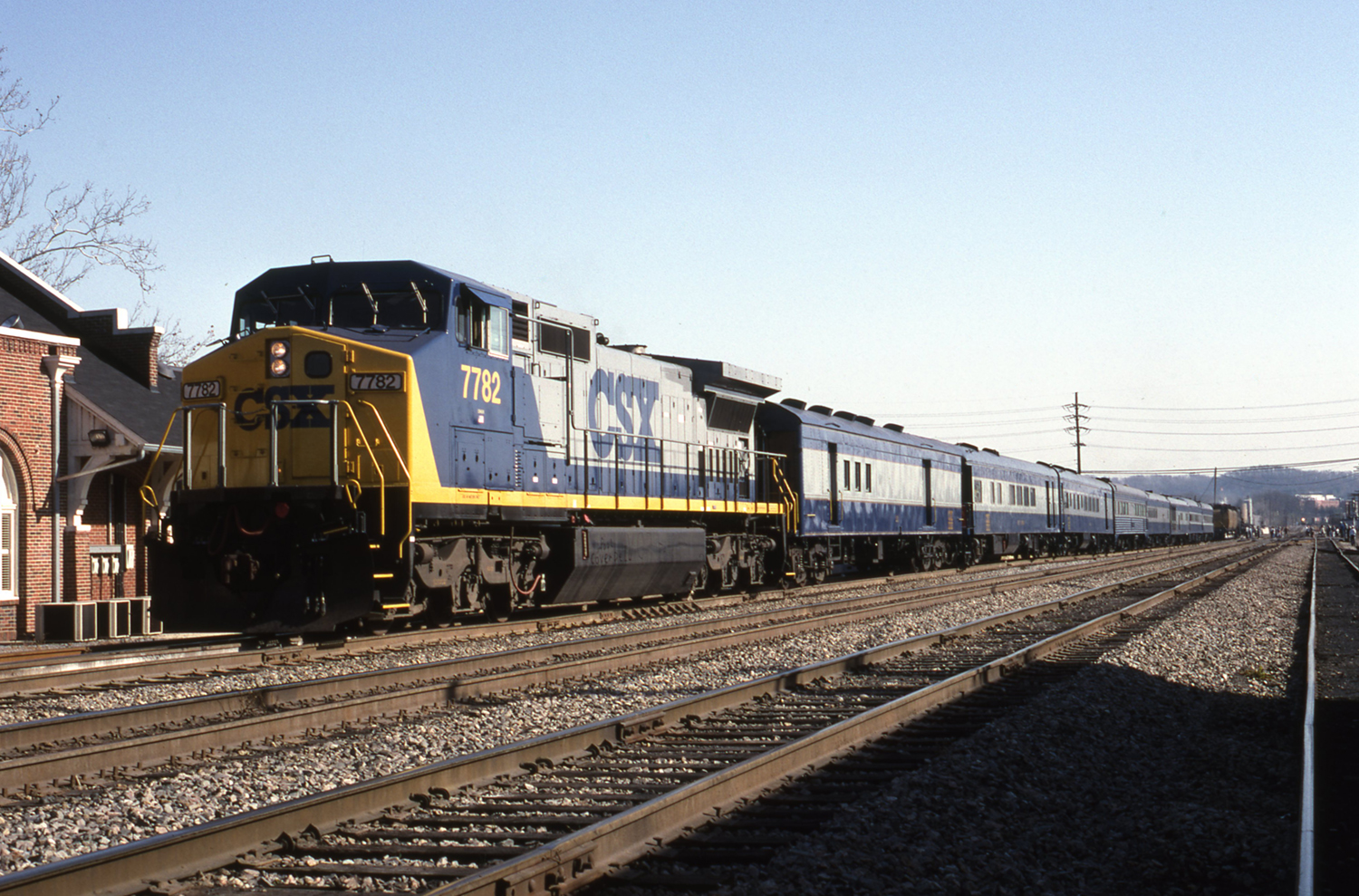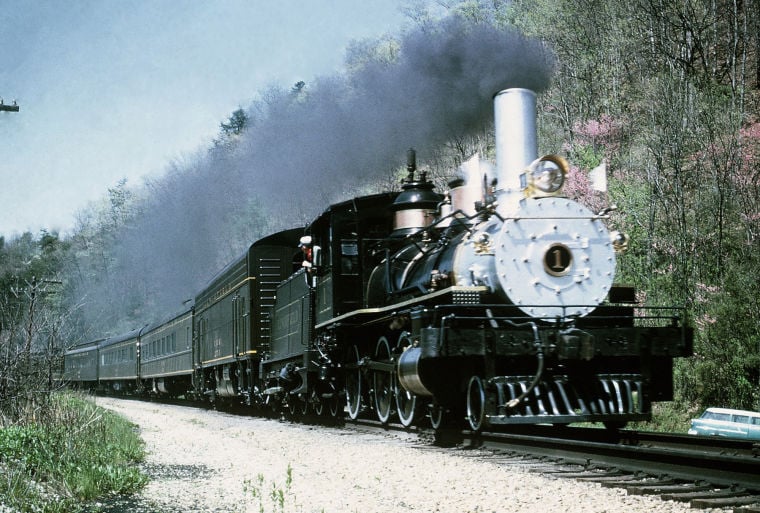The Union Pacific #3985/Clinchfield #676 deal really was, to use a cliche, a Christmas miracle. For the 50th running of the CSX Santa Train, begun by Carolina, Clinchfield & Ohio Railroad, CSX wanted to do something really special and they wanted to pay homage to it's Clinchfield beginnings. And since this was before CSX became a total wet blanket, that meant steam power.

The problem was, there are only two surviving Clinchfield steam locomotives. The 1882-built 4-6-0 #1, was entombed at the B&O Railroad Museum, had a severely cracked frame and was underpowered, being only rated for 2 passenger cars. The other Clinchfield engine, a 1905-built Ten-Wheeler #99 in Jackson, TN, was also similarly underpowered and had not been operated since its retirement in the '40s, requiring a full overhaul, as well as being decorated as Casey Jones' infamous Illinois Central #382. Throughout much of the '60s and '70s, rumors persisted of a third Clinchfield steam locomotive, a 2-8-2 being used as a steam boiler at an Alcoa plant, and were perpetuated by a rather well-known rail photographer in the pages of a magazine, with each story bringing him closer to getting access to this engine. They abruptly stopped when it turned out that this Clinchfield Mike, like the NYC Hudson hidden in a barn or a quarry, was a fabrication by said photographer. He remained touchy about the subject for years later.
Now, the easy button would have been to borrow a light Mike, like Southern #4501 or Grand Trunk Western #4070, both of which were roaming the rails in excursion service, and give them a makeover with a high-mounted headlight and Clinchfield lettering and numbering. But, being it was the 50th anniversary and you only get one of those, CSX was apparently not interested in the easy way. The Carolina, Clinchfield & Ohio, in addition to its scenery and famous Clinchfield Loops, was famous for operating some large articulated power, including multiple classes of 4-6-6-4 Challengers (btw, Clinchfield Challengers would be a terrific name for a minor league baseball team). While the eight E-1 Class and four E-2 Class Challengers were basically a duplicate of D&H J-95 Challenger, the six E-3 Challengers were a Union Pacific 4-6-6-4. Not a duplicate, they had actually been a part of 20-unit order by UP, which had been diverted to the D&RGW by the War Production Board and then sold to Clinchfield in 1947. The E-3s actually remained on Clinchfield property until 1969, waiting for the equipment trusts to run out, before being sent south to Florida and all scrapped in 1971. Clinchfield used UP Challengers and UP had #3985 operating under their excursion program, so it made sense for CSX to reach out to UP. And UP agreed, and sent Steve Lee and his team, along with UP #3985 the farthest east they had ever and have ever been, to Kingston, TN.

Plans derailed, literally and figuratively, at Kingston. After applying magnetic Clinchfield lettering and numbering to the cab and tender and a new #676 number plate to the smokebox, they attempted to back #3985/#676 on the Kingston wye to get it facing the right direction to pull its train up to Shelby, KY, the start of the Santa Train, where it would be turned again to head south to head back to Kingston. What exactly the issue was, nobody was quite sure. Maybe there was a communication error between Steve Lee and CSX, maybe Clinchfield had never operated their Challengers on that division and turned them at Kingston, or maybe the radius of the wye had been changed at some point since the '50s. But #3985/#676's centipede tender refused to navigate the radius. The first attempt, it got so far and then the rear couple axles derailed. The CSX and UP crews rerailed it, then tried dumping all air pressure on the tender brakes to try and get a bit more lateral play in the axles. They got a little farther, then it derailed again. It was rerailed a third time, and this time they tried to pull the tender through the wye with a GP30 (which in 1992 had to be running out its last miles for CSX). Again, it got a little bit farther and derailed the rear couple of axles again. Worried about damaging the tender or rolling a rail, they called it quits, with no one particularly happy. Finally the decision was made to just tow #3985/#676 and the train in reverse up to Shelby, KY with shiny new C40-8W #7782, where it would be facing the correct direction to pull the train back to Kingsport.

The next day, while it was downpouring, crowds flocked to the trackside to see the Ghost Of Clinchfield Past pound down the line, while CSX employees tossed out toys and Moon Pies (it was KY and TN, after all).


Most famously, they parked it on the soaring bridge over Copper Creek and the Norfolk Southern line. Steve Lee is reported to have sat there and blasted the whistle over 2 dozen times, and then jokingly blew down the boiler so that they could take a figurative leak on NS.


While the event was a huge success, it wasn't without some tribulations. Again, either Clinchfield had never run their big E-3 Challengers on this division, or their had been some sort of change in the track curvature, because on a tight curve onto a passing siding they smashed the fireman's running board on a coal hopper car on an adjoining track, which had to have been a bracing experience. UP's ground crew fixed it as best they could and continued running it with the crumpled board. After that, they made sure every passing siding was completely clear, no locomotives or cars at all, whenever the big articulated pounded through.





Clinchfield had had some tunnel clearance troubles with the big ex-D&RGW/UP Challengers when they had first received them, and the first one through the Altapass tunnel had scraped up the tunnel wall and side of the locomotive. Clinchfield had installed a shoofly track to avoid that issue. Steve Lee and the UP crew were probably pretty thankful of that.


After the event was over, #3985/#676 headed back to St. Louis where it changed back onto UP rails and headed back to Cheyenne. It never wore its Clinchfield disguise again and, as far as I can tell, she never came that far east again. Likely never will either, as #3985 was parked in 2010, needing a complete overhaul, and then with #Big Boy #4014 returned to operation, UP has decided to permanently retire the Challenger.

This photo is interesting just because both engines are rods-down. That's a rare sight.






















.JPG)


































































